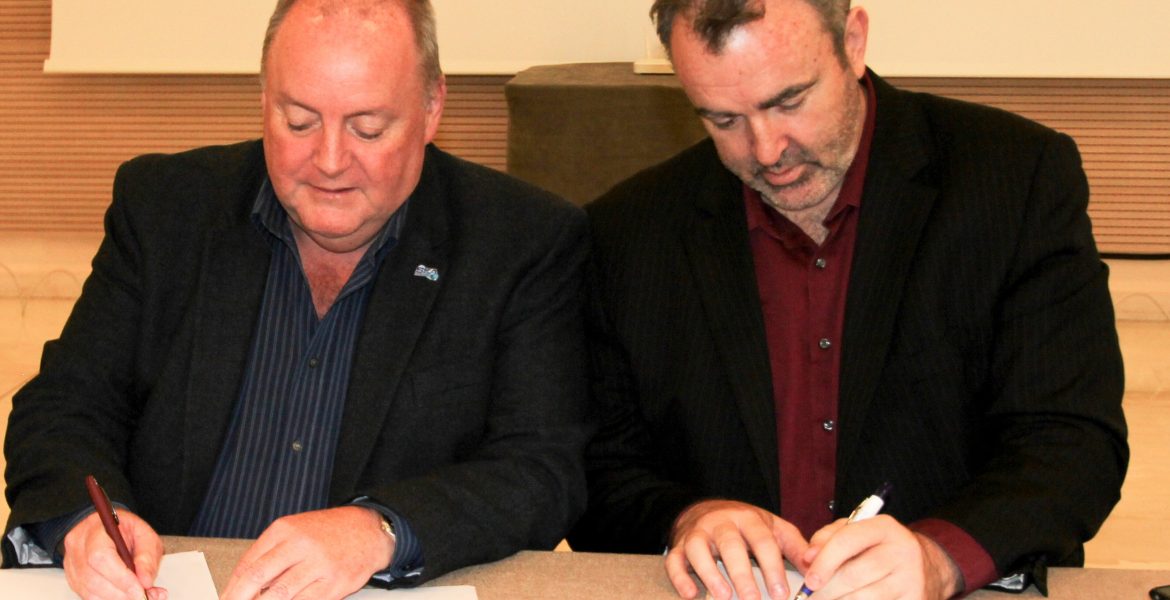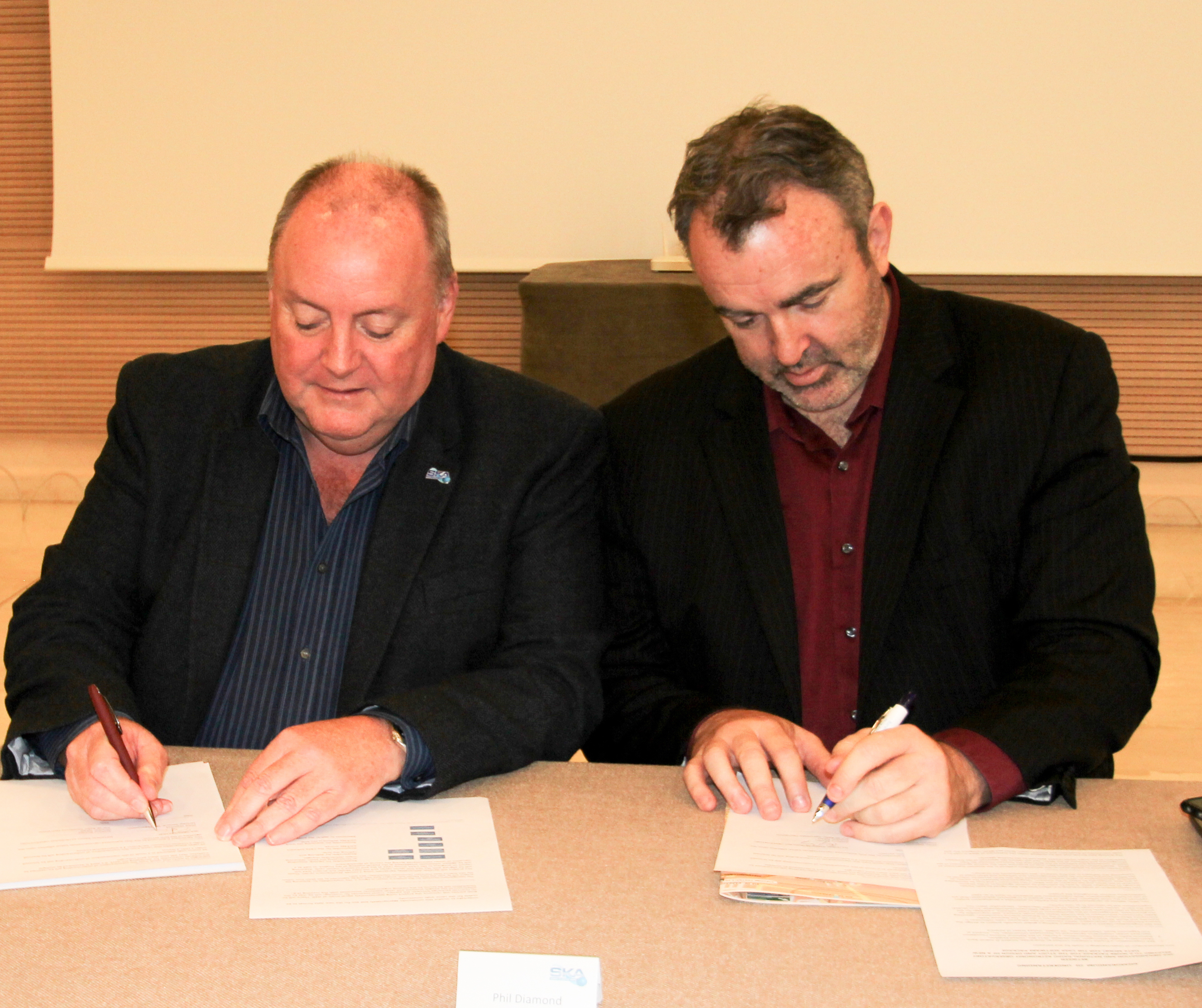During the Square Kilometer Array (SKA) Board of Directors meeting, the SKA Organisation and NRAO signed a Memorandum of Understanding (MoU) for the design and development of new data models to address the data processing requirements of their next-generation telescopes.
The MoU establishes an agreement for collaborative and continued development work on the Common Astronomy Software Applications (CASA) software package, initially developed by NRAO and partners in the early 1990s. CASA is the leading package for radio astronomy data reduction around the world and is used currently for the international Atacama Large Millimeter/submillimeter Array (ALMA) and the NRAO’s Very Large Array (VLA) telescopes, among other facilities. Both ALMA and the VLA are presently the largest telescopes of their kind in the world, respectively observing in millimeter/submillimeter and longer radio wavelengths.
“Next-generation radio telescopes such as the SKA will have extreme processing requirements and CASA doesn’t currently have the capabilities to handle such large bandwidths and field-of-view datasets that will be produced by these telescopes,” says SKA Organisation Director General Philip Diamond. “The collaboration we are formalizing today with a renowned institution such as NRAO is very much welcome and will enable extensive collaborative work to update the CASA core data models for it to become scalable to the needs of our worldwide community.”
“We are pleased to work with our SKA colleagues to extend the CASA framework to support several future radio telescopes,” says NRAO Director Tony Beasley. “We are building upon the investment made by the global astronomy community in CASA over the past two decades, enabling new science and instrumental capabilities.”
This overhaul of the CASA software will be necessary for a new era of astronomy, which will not only benefit the next-generation telescopes, but also the radio astronomy world as a whole, who would be able to use the updated CASA software to better improve the data processing needs of their observatories, which can process both interferometric and single dish data.
About the SKA
The Square Kilometre Array (SKA) project is an international effort to build the world’s largest radio telescope, led by the SKA Organisation based at the Jodrell Bank Observatory near Manchester. The SKA will conduct transformational science to improve our understanding of the Universe and the laws of fundamental physics, monitoring the sky in unprecedented detail and mapping it hundreds of times faster than any current facility.
The SKA is not a single telescope, but a collection of telescopes or instruments, called an array, to be spread over long distances. The SKA is to be constructed in two phases: Phase 1 (called SKA1) in South Africa and Australia; Phase 2 (called SKA2) expanding into other African countries, with the component in Australia also being expanded.
Already supported by 10 member countries – Australia, Canada, China, India, Italy, New Zealand, South Africa, Sweden, The Netherlands and the United Kingdom – the SKA Organisation has brought together some of the world’s finest scientists, engineers and policy makers and more than 100 companies and research institutions across 20 countries in the design and development of the telescope. Construction of the SKA is set to start in 2019, with early science observations in the early 2020s.
Learn more about the SKA: http://skatelescope.org/
The National Radio Astronomy Observatory is a facility of the National Science Foundation, operated under cooperative agreement by Associated Universities, Inc.
Contact: Charles Blue
(434) 296-0314; cblue@nrao.edu









